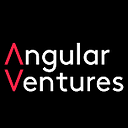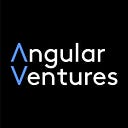Mass Education Event
Angular Ventures Weekly
Issue #191: For the week ended July 11, 2023
Subscribe here to receive new Angular blogs, data reports, and newsletters directly to your inbox.
Mass Education Event
Gil Dibner
Earlier this year, Tom Loverro of IVP correctly predicted that the startup world would go through a “mass extinction” event. I completely agree with his analysis, but I want to call attention to something else. We are — I think — also undergoing a mass education event. We are all relearning through our own painful experience the hard-won lessons of previous generations of startups.
The conversations that I am having with founders today are often refreshingly grounded. Yesterday, an experienced founder told me that he’s “taking some time to let the technological dust settle around LLMs” before deciding on his next move. Another founder told me that he’s worried about raising too much capital because he doesn’t want to make his next round challenging to raise and wants to benefit from focus and discipline. A third is hard at work ideating and meeting potential co-founders and working a side-hustle to make ends meet while that goes on. Two other founders told me in recent weeks that they had plans to trim their burn rates proactively, ensuring that they remained “default alive” (i.e. a going concern without further fundraising) even if their worst case scenarios come to pass.
VCs and founders are suddenly taking the time to get to know one another before jumping into irrevocable multi-year relationships. Founders and VCs are taking syndication seriously again, asking themselves who the specific partners are that will be joining them on the journey, and investing some time in checking alignment before tying the knot.
Most importantly, the best founders are laser focused on product, not just innovation. The overall conversation seems to have shifted from building momentum and pure storytelling to creating measurable value for customers and figuring out how to package that value into a product that can be purchased and adopted by customers in the easiest way possible.
All of this may seem obvious, and perhaps it is. But it was not how startup land was operating as recently as six months ago. We’ve all seen the statistics on the collapse of VC funding levels around the world. Series A firms — for the most part — have taken their ball and gone home (unless you are a generative AI startup, in which case you can have as many balls as you want!).. It took a while for the machinery of the overheated venture market to grind to a halt — but now it has. That machine is now largely silent, which is scary for all of us — especially seed-stage founders and VCs. But that silence has given us the chance to pause, strategize, and focus on what really matters. It’s given us the opportunity to run businesses and not just startups. We’re gradually moving from pitches and promises to products and potential profits.
The pain of the mass extinction that Tom describes is real and ongoing. It will be with us for some time. But the benefits of the mass education event we are going through are also real. The tech ecosystem that is emerging from the wreckage of the crash is going to be slightly smaller and much wiser than it was before. The business of company building was never supposed to be easy, but it’s a lot more rewarding to attempt it with our feet planted firmly on the ground and our eyes wide open.
PODCAST
US Immigration Best Practices
Jennifer Schear, Founding Partner, Schear Immigration Law Firm
Learnings from Co-Founding Peakon, Podio, and Future Five
Kasper Hulthin, Co-Founder, Peakon, Podio, Future Five
The Evolution of Collibra’s Product Positioning & How They Created a Category
Stijn “Stan” Christiaens, Co-Founder & Chief Data Citizen, Collibra
Lessons Learned From Investing Early in Over a Dozen SaaS Unicorns
Jason Green, Founder & General Partner, Emergence Capital
FROM THE BLOG
Kafka Survivors of the World, Unite!
Why we backed Memphis.dev.
The Problem with Startup Advice
The best founders and investors know the rules, but also know when to break them.
Looking Back to Move Forward
How to survive this extraordinarily exciting and wildly disconcerting age of generative AI.
LLMs and the Future of Customer-built Software Design
How will LLMs change software development and design?
WORTH READING
ENTERPRISE/TECH NEWS
The AI problem solver. Code Interpreter, from OpenAI, is here. Code Interpreter can read uploaded files, execute code, generate diagrams, and run statistical analyses. The big difference is that with Code Interpreter, code is a “first language” of the LLM. In his latest post, Ethan Mollick explains the power of this new feature with a series of examples that will make even the biggest AI skeptic excited. As Mollick describes, Code Interpreter: “essentially allows the most advanced AI available, GPT-4, to upload and download information, and to write and execute programs for you in a persistent workspace.” Mollick shares a few specific ways to leverage Code Interpreter with data, as well, so you can get started quickly. (I know what I’m doing this weekend.)
AI-powered forecasts. Two new papers published in Nature this past week highlight the potential for AI to be used to speed up our ability to forecast the weather. Huawei’s Pangu-Weather model can predict weekly weather patterns more quickly (with comparable accuracy).
Multi-layered calendars. A thought-provoking post from Julian Lehr about what a better, smarter calendar might look like. He makes two points. First, calendars should natively differentiate between different types of events: tasks, meetings, blocked time, and “activities” (as he calls them). Second, if a calendar did that well, then calendars could also be used for other use cases…like a “quantified self” layer on top of your calendar that tracked your heart rate and stress level throughout the day, or the music you were listening to during different points in time.
HOW TO STARTUP
Mythical metrics. Charles Hudson of Precursor Ventures has a reminder for all the early stage founders out there: there’s no such thing as Series A metrics. If you ask a series A investor for what they want to see, they’ll feel obligated to say something. And all those somethings have populated thousands of blog posts about raising your series A over the years. But the reality is a company is more than its metrics. And investors are looking for something extraordinary, which is quite subjective. Not only do you need to have a clear path to building a $1B business, you need to be one of the top teams the investor has met, and one of the most interesting opportunities in their pipeline. The first point is in your control, the second two…not so much.
Great work. Paul Graham is one of the great essay writers of the tech world, but his latest, titled “How to do Great Work” stands out. It’s useful reading for anyone, but I think it’s especially valuable for founders or early employees who are thinking about what to work on next, or perhaps doubting that they’re on the right path.
HOW TO VENTURE
We’re…back? Carta released its “State of the Private Markets” report for Q2 2023 this past week, and it looks like both round size and pre-money valuations have increased over Q1 2023 numbers. Outside of much-hyped generative AI startups, though, it’s difficult to find examples of exuberance in private markets these days. So what’s the explanation for this shift? We don’t know the total number of rounds completed, so one possible explanation is that only the “best” companies are getting funded. Or perhaps the market really is back! We’ll know more in a few quarters when more data is available.
You can’t eat TVPI. Matt Garratt of USVP highlighted a troubling trend…DPI is lagging historic averages across all vintages post-2016. Said another way, prior to 2016, vintages had returned more capital at the same age, as compared to more recent vintages. This is worrying, and it’s worth asking what’s changed. Perhaps this is the result of more capital finding its way into venture? Larger funds are harder to return. That’s part of it. But also, with capital so free-flowing, fewer companies saw the need to go public or take acquisition offers. DPI was foregone in favor of more growth. With that in mind, could this downturn actually hasten the closing of the gap between pre-2016 and post-2016 DPI vintages? Only time will tell.
PORTFOLIO NEWS
Memphis.dev, an Israeli startup which simplifies event streaming, announced a $5.5M seed investment led by Angular Ventures and Boldstart Ventures.
Groundcover is aiming to reinvent cloud-native application monitoring with eBFP in a $50B market. Pulse 2.0 interviewed Groundcover CEO Shahar Azulay to learn more.
Datos Health was selected as one of Avia’s 2023 Top Remote Monitoring Companies.
LoudnClear’s CEO, Shaked Izrael outlined five questions customer success managers can ask to capitalize on revenue opportunities within their existing customer base.

